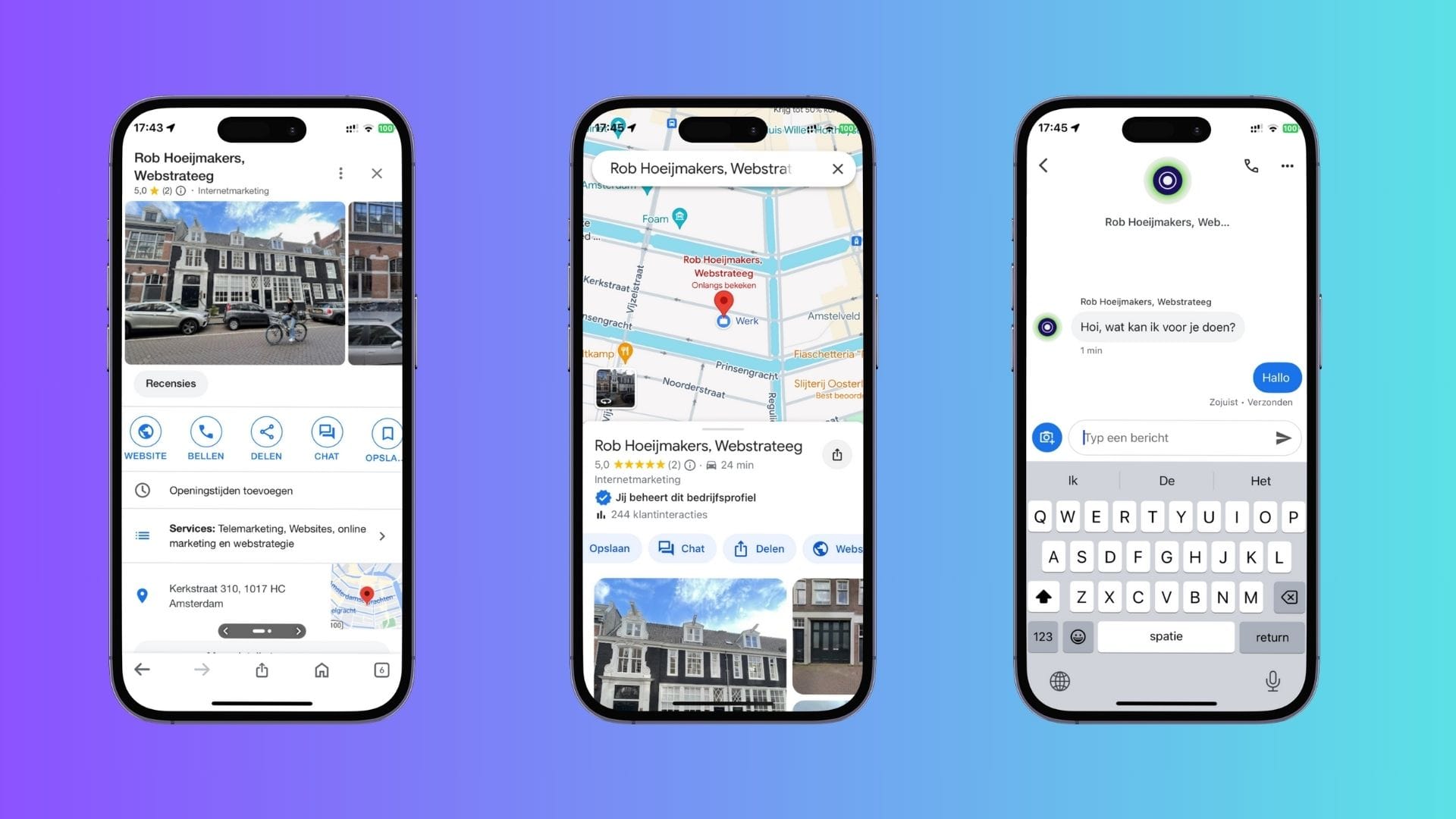Chat feature in Google Maps disappears
For many online professionals, the news came as a surprise: the chat feature in Google Maps, better known as "chat with business profile", will soon disappear.

The feature, which allowed users to send messages directly to businesses via the Google Maps and Search apps for enquiries, appointments or quotes, will end from 15 July 2024. No new calls can be started from that date, and on 31 July 2024, all existing calls will end. Businesses still have until 30 August 2024 to download their conversation history through Google Takeout.
This change fits a familiar pattern at Google. The company is known for regularly introducing new services and features, often accompanied by name changes, only to terminate them just as quickly. Google My Business, for instance, recently underwent a name change to Google Business Profile. For businesses and online professionals, this means staying flexible and alert to changes in the tools they use.

Why is the Chat feature disappearing?
While Google has not given specific reasons for the discontinuation of the chat feature, there are some plausible explanations. Possibly the feature proved less popular than expected, or maintaining and updating the chat service is no longer profitable for Google.
In addition, there has been a shift in the way companies and customers communicate.
The importance of alternative channels
The announcement of the demise of chat highlights the growing importance of other communication channels.
Here are some alternatives that companies can consider:
1. Social Media Messaging
Platforms such as Facebook Messenger, WhatsApp, Apple Messages for Business (formerly Apple Business Chat) and Instagram Direct offer robust messaging functionalities that businesses can use to communicate quickly and informally with customers. These platforms are hugely popular and often offer extensive customer service capabilities.
2. Live Chat on the Website
Many companies offer live chat on their own websites. This form of communication is often more efficient as it is directly integrated with the company website and can be customised to the specific needs of the customer.
3. Email and CRM systems
Although e-mail is traditional, it remains a powerful tool for customer communication, especially when combined with Customer Relationship Management (CRM) systems that help manage customer relationships and interactions.
4. SMS and Messaging Apps
Besides WhatsApp, there are numerous other messaging apps such as Telegram and Signal that businesses can use for quick communication. These apps are especially useful for sending time-critical information or updates.
My personal recommendation
The disappearance of the chat feature in Google Maps is a reminder of the need for businesses to remain flexible in their communication approach. By capitalising on the most popular and effective channels, companies can not only improve their customer service, but also increase their reach and engagement.
Online professionals should therefore constantly evaluate which tools and platforms best suit their business goals and customer needs.
It is a time of transition, but also an opportunity to embrace new and perhaps better communication methods. Stay proactive, stay innovative and make sure your business is always ready for the next change in the digital landscape.



